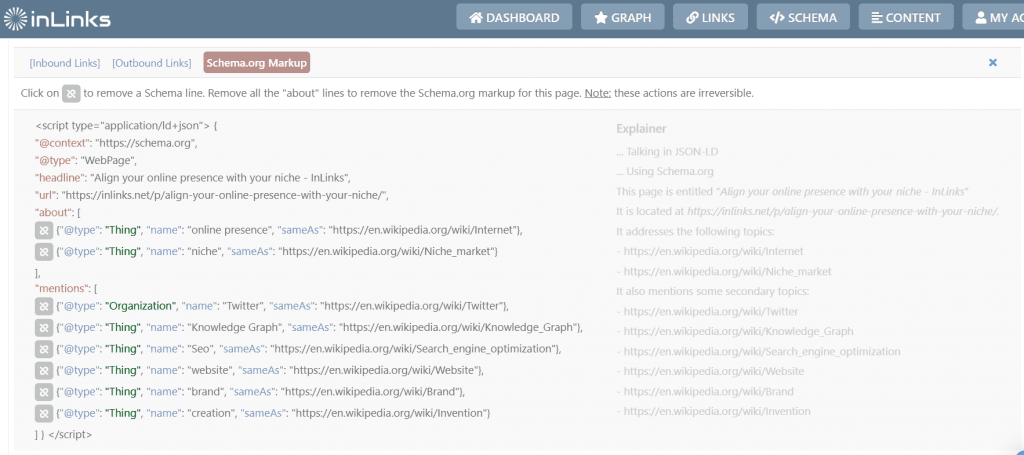You can define your own entities on your own web pages. When a search engine such as Google comes to see your site, they will see the underlying structured data on the page, which will allow them to easily categorize the content. Webpage schema is a sensible approach to doing this. You do not need to be listed in other RDFs to have entities recorded around the content you create.
Here is full documentation on structured data from Schema.org. However, as this is the beginner’s guide, here are some quick and easy ways to understand, organize and add structured data to your pages.
Looking at your structured data
Unless you are used to working with code, it can be very difficult to understand what structured data is already on each page of your website. Fortunately, Google provides a simple to use structured data testing tool. You do not have to own a website to be able to use the tool. It works on any site.

Tip: Use the structured data tools on your competition
There are many structured data tools. It is likely, though, that you have a few serious competitors in your niche. Some of these may have done a much better job than you at becoming an entity in their own right or at least becoming an expert on entities that you feel you should own. You can take two steps to view a data structure that might work for you:
1: Use Google’s Knowledge Graph Search Tool to establish whether your competitor’s brand or name is already properly defined in the Google Knowledge Graph.
2: Then use the Structured data tool on the best-represented competitors’ web pages to understand how they used structured data.
Inlinks Automates Webpage Schema Markup For You
Many tools claim to automate schema, but very few, beyond InLinks will create webpage schema for you automatically. This is because most schema tools will create other types of schema – which is valuable of course – but not necessarily help Google understand the content on your site. Another schema may help turn content into a recipe, or an event or describe the author or the organization behind the content. InLinks, on the other hand, describes the content meaning itself, by taking the most important entities and telling search engines through a schema that the page is ABOUT these main entities and then takes the secondary ideas and tells the search engines through a schema that the page MENTIONS these secondary entities.

Inlinks can automate this very effectively because it manages its own knowledge base.
How to Automate Webpage Schema (using inlinks.net)
- Add the URL to inLinks
- Associate the URL with one or more primary topics
- There is no 3 (if you have already set up inLinks code)
Using Plugins for WordPress
Yoast plugin for WordPress: Yoast’s plugin is one of several that will create your structured data for you. All you have to do is to decide whether your blog should be set up as a person or as an organisation. The plugin then uses your other setup configurations, such as your user profile and social media profiles to build out the structured data.
There are many other plugins that also allow you to manage your structured data on WordPress. A self-updating list is here. You should only integrate plugins with a large (10,000+) user base and one that is being regularly updated to work with your versions of WordPress. It is also probably good to only have ONE plugin trying to manage your structured data at any one time. You can make plugins inactive at the click of a button in WordPress if one plugin is clashing with another.
